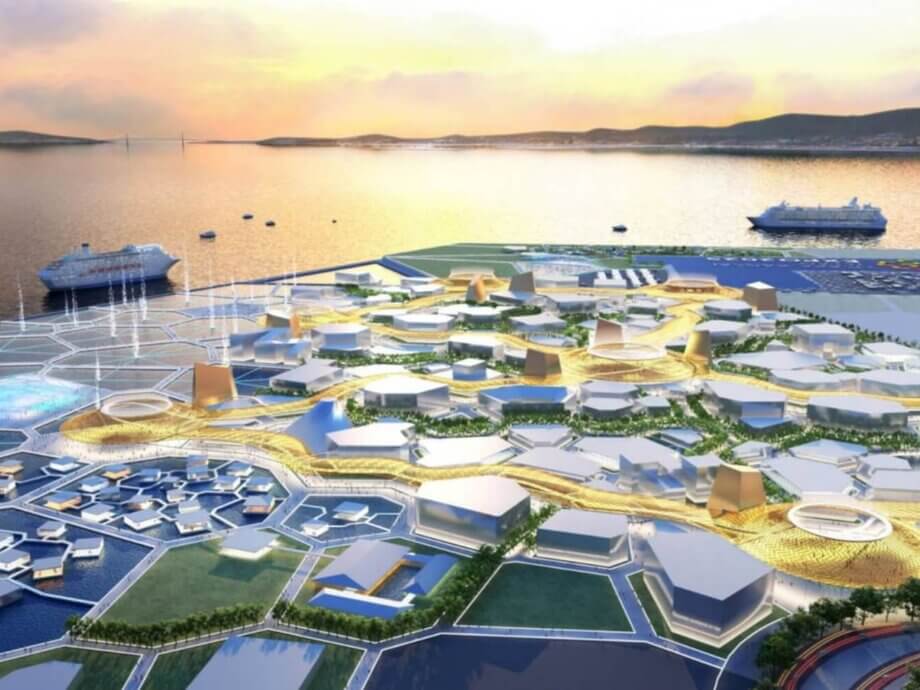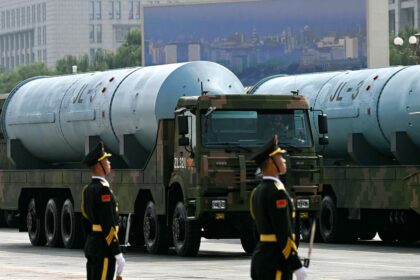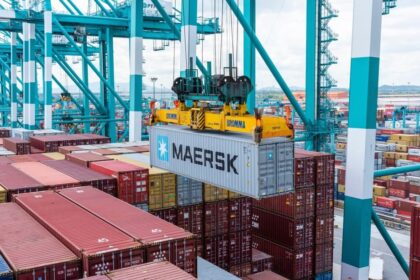Osaka-Kansai Expo 2025: Can Visitor Numbers Drive Profitability?
The 2025 Osaka-Kansai Expo, one of the world’s largest international exhibitions, is underway in Osaka, Japan. As the event passes its halfway mark, attention is sharply focused on whether it can achieve its ambitious visitor targets and turn a profit. Organizers have set a clear benchmark: the Expo must attract 22 million admissions during its six-month run to become profitable. With daily attendance now averaging around 130,000, the Expo’s financial trajectory, visitor experience, and broader economic impact are under close scrutiny.
- Osaka-Kansai Expo 2025: Can Visitor Numbers Drive Profitability?
- How Many Visitors Does the Expo Need to Succeed?
- Tracking Ticket Sales and Attendance: Are Targets Within Reach?
- What’s Driving (and Hindering) Attendance?
- Economic Impact: Beyond the Expo Gates
- Expo Themes: Showcasing the Future of Society
- Challenges and Controversies: Navigating a Complex Landscape
- Looking Ahead: Will the Expo Achieve Its Goals?
- In Summary
How Many Visitors Does the Expo Need to Succeed?
The Japan Association for the 2025 World Exposition, the event’s organizer, has stated that 22 million admissions is the threshold for profitability. This figure includes repeat entries by season pass holders, not just unique visitors. To break even, 18 million tickets must be sold, covering more than 80% of the Expo’s ¥116 billion (about $800 million) operational budget. The initial goal was even higher: 23 million tickets sold and a total of 28.2 million admissions, reflecting the scale and ambition of the event.
After a slow start, daily attendance has climbed from under 100,000 to an average of 130,000 in recent weeks. This uptick is crucial, as the Expo needs to maintain or exceed this pace to reach its financial goals. Masakazu Tokura, chairperson of the association and honorary chair of the Japan Business Federation (Keidanren), expressed optimism at a recent press conference:
“We made a good start. If the pace of increase in the past month continues, [the Expo] can become profitable.”
As of late June, the Expo celebrated surpassing 10 million visitors, a milestone reached just 79 days after opening. This achievement was marked by a ceremony and commemorative gifts for the ten-millionth visitor, signaling both momentum and public engagement.
Tracking Ticket Sales and Attendance: Are Targets Within Reach?
Ticket sales are the primary revenue source for the Expo, expected to cover nearly ¥97 billion of the operational budget. According to official figures, 10.9 million tickets had been sold by early May, with projections (including school trips) pushing the number to 13 million. With five months remaining at that point, selling the additional tickets needed to break even appeared achievable.
However, attendance figures have not always matched projections. In the first month, visitor numbers were at about 60% of the expected pace, prompting organizers to introduce measures to boost early attendance and prevent congestion later in the event. These included discounts on season passes and expanded reservation slots for popular entry times. The Expo’s reservation system, designed to manage crowd flow and avoid long lines, has been both praised for its efficiency and criticized for limiting spontaneous visits.
Historically, World Expos tend to see attendance rise as the event progresses, with the latter half often drawing larger crowds. The 2005 Aichi Expo, for example, saw daily attendance surge from 40,000–90,000 early on to peaks of 280,000. Organizers of the Osaka-Kansai Expo are banking on a similar pattern, hoping that word-of-mouth, social media buzz, and the summer vacation season will drive a late surge in visitors.
What’s Driving (and Hindering) Attendance?
Several factors have influenced the Expo’s attendance trajectory:
- Initial Skepticism and Criticism: In the lead-up to the event, the Expo faced criticism over construction delays, budget overruns, and a perceived lack of major attractions. Some local officials labeled the Grand Ring, the Expo’s signature wooden structure, as wasteful. High ticket prices (7,500 yen for admission) and expensive food and souvenirs also drew complaints.
- Improving Visitor Experience: Despite early skepticism, many visitors have reported positive experiences. The Expo’s circular layout prevents bottlenecks, and the Grand Ring provides shade and a unique vantage point. Pavilion lines can be long, but the reservation system and staff efficiency have improved entry times. Social media has played a key role in highlighting must-see exhibits, fueling interest and attendance.
- Safety and Comfort: Concerns about methane gas from the landfill site and rumors about structural hazards have largely been addressed. Organizers have increased transparency about safety measures, and no major incidents have been reported since opening.
- International Participation and Diplomacy: The Expo serves as a global stage, with countries showcasing their cultures and innovations. High-profile visits, such as Denmark’s King Frederik X leading a business delegation, have underscored the event’s diplomatic significance. The Expo has also reflected ongoing global tensions, with pavilions from Israel, Palestine, Ukraine, and Taiwan highlighting political and humanitarian issues.
These dynamics have contributed to a steady rise in attendance, with the Expo now on track to meet its profitability target if current trends continue.
Economic Impact: Beyond the Expo Gates
The Osaka-Kansai Expo is more than a showcase of technology and culture—it’s a major economic engine for the region and Japan as a whole. The Ministry of Economy, Trade and Industry estimates that the Expo could attract up to 30 million visitors, surpassing the 22 million who attended the 2005 Aichi Expo. The total economic impact is projected to reach 2.9 trillion yen (about $20 billion), factoring in construction, operations, tourism, and related consumption.
The Expo’s location on Yumeshima, a man-made island in Osaka Bay, is also significant. The area is slated for further development, including an integrated resort (IR) with a casino, which is expected to amplify the economic benefits. Local companies involved in construction, hospitality, and logistics are already seeing increased business, and tourism-related stocks have surged in anticipation of record visitor numbers.
Japan’s broader tourism boom is another key factor. In 2024, the country welcomed nearly 37 million inbound visitors, with projections for 2025 exceeding 40 million. The weak yen and the global draw of the Expo are major drivers, benefiting hotels, retailers, and service industries nationwide.
Expo Themes: Showcasing the Future of Society
The main theme of the Osaka-Kansai Expo is “Designing Future Society for Our Lives,” with sub-themes focusing on health, sustainability, and advanced technology. The event features exhibits on medicine, artificial intelligence, virtual reality, and sustainable living, reflecting Japan’s leadership in life sciences and innovation.
Osaka’s aging population and the concentration of research institutions in the Kansai region make the Expo’s focus on health and longevity particularly relevant. Companies like Sysmex, a leader in medical diagnostics, are using the Expo to showcase breakthroughs in cancer and Alzheimer’s detection. The event also highlights Japan’s efforts to address societal challenges through technology and international collaboration.
Challenges and Controversies: Navigating a Complex Landscape
No major international event is without its challenges, and the Osaka-Kansai Expo has faced its share:
- Budget Overruns and Construction Delays: The Expo’s budget nearly doubled due to inflation and pandemic-related delays, fueling public skepticism and political debate.
- Safety Incidents: Early concerns about methane gas and isolated incidents, such as the detection of Legionella bacteria in a water feature, required swift action and transparency from organizers.
- Political Tensions: The Expo has become a stage for international diplomacy and, at times, controversy. Israel’s display of a 2,000-year-old stone from East Jerusalem and the Palestinian pavilion’s focus on the Gaza crisis have highlighted ongoing global conflicts. Russia’s withdrawal and Taiwan’s participation under a non-governmental banner reflect the complex geopolitics at play.
- Public Perception: Surveys indicate that only about 35% of Japanese respondents planned to attend the Expo, below the organizers’ target of 55%. However, actual attendance has been buoyed by international visitors and positive word-of-mouth.
Despite these hurdles, the Expo has managed to maintain momentum, with organizers adapting strategies to address challenges and capitalize on opportunities.
Looking Ahead: Will the Expo Achieve Its Goals?
With just over four months remaining, the Osaka-Kansai Expo’s prospects for profitability and lasting impact remain promising but not guaranteed. The event’s ability to sustain high daily attendance, manage visitor experience, and navigate political and logistical challenges will determine its ultimate success.
Organizers are optimistic, pointing to the upward trend in attendance and the Expo’s role as a “window to the world.” The event’s legacy will extend beyond ticket sales, influencing regional development, international relations, and Japan’s global image for years to come.
In Summary
- The 2025 Osaka-Kansai Expo needs 22 million admissions to become profitable, with 18 million ticket sales as the break-even point.
- Daily attendance has risen to around 130,000, putting the Expo on track to meet its financial targets if the trend continues.
- Ticket sales and visitor numbers have surged after a slow start, aided by improved visitor experience and social media buzz.
- The Expo’s economic impact is projected to reach 2.9 trillion yen, benefiting Osaka and Japan’s broader tourism and service sectors.
- Challenges include budget overruns, safety concerns, political controversies, and mixed public perception, but organizers have adapted strategies to address these issues.
- The Expo serves as a global stage for innovation, diplomacy, and cultural exchange, with themes focused on health, sustainability, and advanced technology.
- With several months remaining, the Expo’s final success will depend on sustained attendance, effective management, and its ability to leave a positive legacy for Osaka and Japan.












